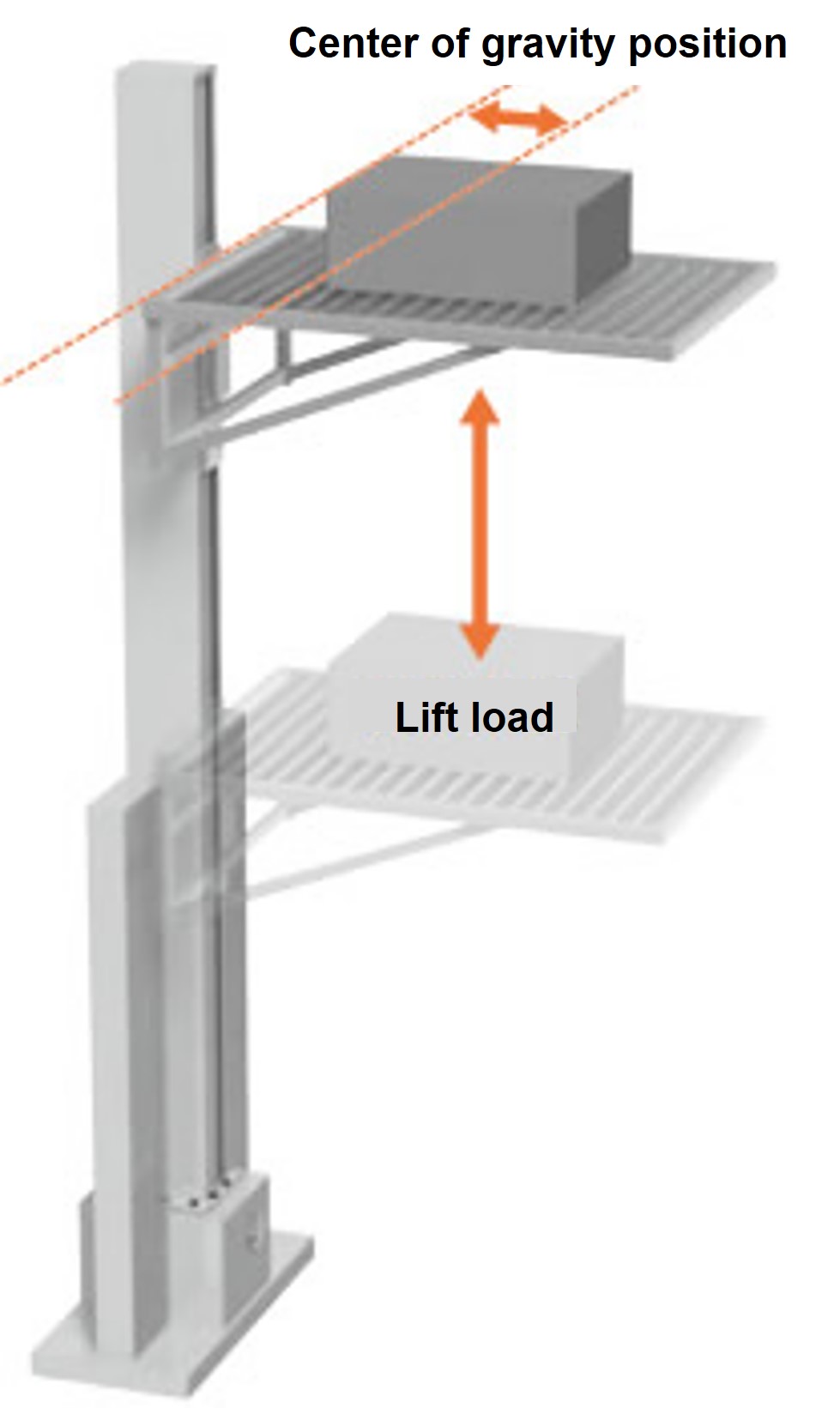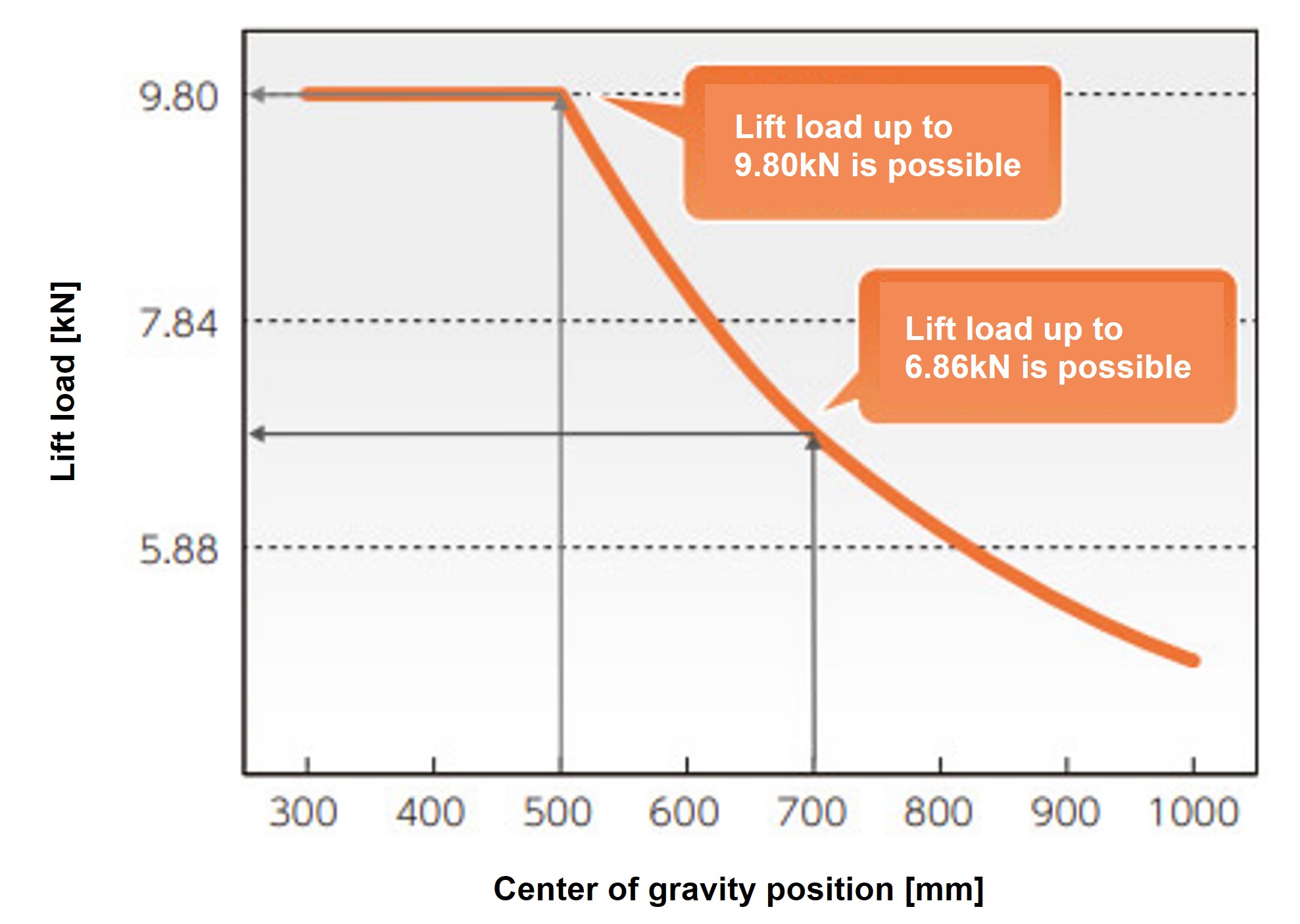Technical Data High-speed lifters Zip Master Selection
Cautions for Product Selection
1. Acceleration/deceleration times
- ・ZIP MASTER achieves high-speed operation, and inverter drives are essential. Please make sure to operate with sufficient acceleration and deceleration time.
Rapid acceleration and quick stop may affect stopping accuracy or cause workpiece vibration.
When ZIP MASTER shakes depending on the table or arm rigidity or the load condition, take a longer acceleration and deceleration time when starting or stopping the operation.
Consider fixing the upper end of ZIP MASTER to reduce workpiece vibration. - ・The nominal speed of ZIP MASTER is the maximum speed. Make sure to consider the acceleration/deceleration time when calculating lifting/lowering time.
- ・Using a servomotor drive is recommended when faster lifting time, higher-frequency operation, multi-point positioning, or synchronized operation are required.
Contact a Tsubaki representative for more information. - ・Using a servomotor drive is recommended when faster lifting time, higher-frequency operation, multi-point positioning, or synchronized operation are required.
2. Inverter control
- ・Provide an inverter regenerative resistor with sufficient capacity according to the operating conditions to handle the large regenerative current generated during lowering.
Consult the inverter manufacturer for regenerative resistor capacity. - ・Use of an inverter with a capacity larger than that of the motor is recommended.
- ・Set up a sequence for activating the brake in the event the inverter trips.
3. Fall prevention
- ・ZIP MASTER is driven by an induction motor with brake. When a servomotor is prepared by the customer, make sure to select a brake type with a keyway on the shaft.
Also prepare a fall prevention mechanism to protect against falls.Fall prevention pins are available upon request.
4. Servomotor control
- ・Provide a regenerative resistor with sufficient capacity according to the operating conditions to handle the large regenerative current generated during lowering.
Consult the servomotor manufacturer for regenerative resistor capacity. - ・Do not use the built-in mechanical brake for braking even when stopping in an emergency.
Be sure to use control logic that activates the mechanical brake after deceleration by the dynamic brake. For details, refer to the motor manufacturer's instruction manual.
Product Selection
Operating conditions
- 1. Application and required number of ZIP MASTER
- 2. Lifting mass amount
- 3. Speed
- 4. Stroke
- 5. Overhung load
- 6. Frequency of use
- 7. Operating environment
See the ZIP MASTER Technical Sheet (click here) for more information.
Selection procedure
- 1. Make sure that the application, the method of use, and the ambient condition are suitable for ZIP MASTER.
- 2. From the specifications list (click here), select a model with a rated load that satisfies the required lifting load.
※Consider using multiple synchronized units if the lifting load will exceed the rated load.
Contact a Tsubaki representative for more information on selecting and controlling multiple synchronized units. High load specifications are also available upon request. Contact a Tsubaki representative for more information. - 3. Verify that the nominal speed of the selected model satisfies the required lifting speed.
※Specifications with higher lifting speeds also available. Contact a Tsubaki representative for more information. - 4.Verify the required stroke.
※Specifications with a stroke exceeding 2,000 mm are available upon request. Contact a Tsubaki representative for more information. - 5. Refer to the following to verify that the selected model satisfies the overhung load.
Verification of Allowable Overhung Load (OHL)
You can easily select the appropriate ZIP MASTER by verifying the lift load and the center of gravity position. As shown in the figure to the right, the allowable overhung load equals the point where the lift load intersects the center of gravity position.
Click here for the OHL load curves of each model.
Notes
- ・ZIP MASTER arm end will bend toward the load direction when load is applied on the arm. This will not only apply more for longer strokes, but it will also affect arm and table rigidity.
- ・Fix ZIP MASTER upper end to reduce the arm bend or ZIP MASTER vibration.
- ・Contact a Tsubaki representative for more information on ZIP MASTER warping.

ZMEL1000M
(Workpiece mounting surface: Refer to outline dimensions )

ZMEL1000M
ex. 1 Center of gravity position = 500mm position → max. lift load = 9.80kN
ex. 2 Center of gravity position = 700mm position → max. lift load = 6.86kN

